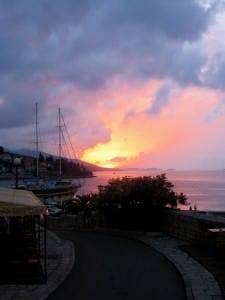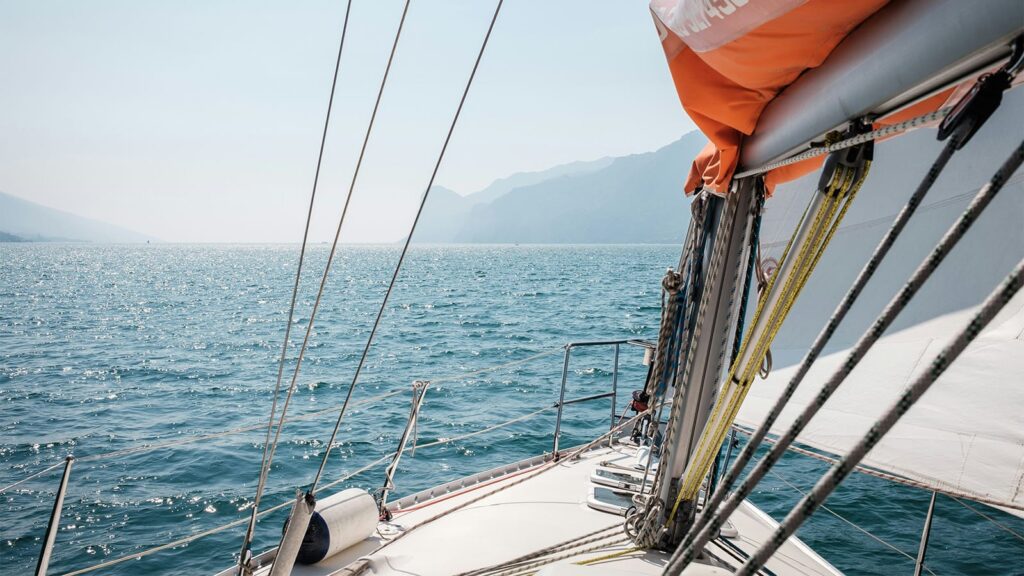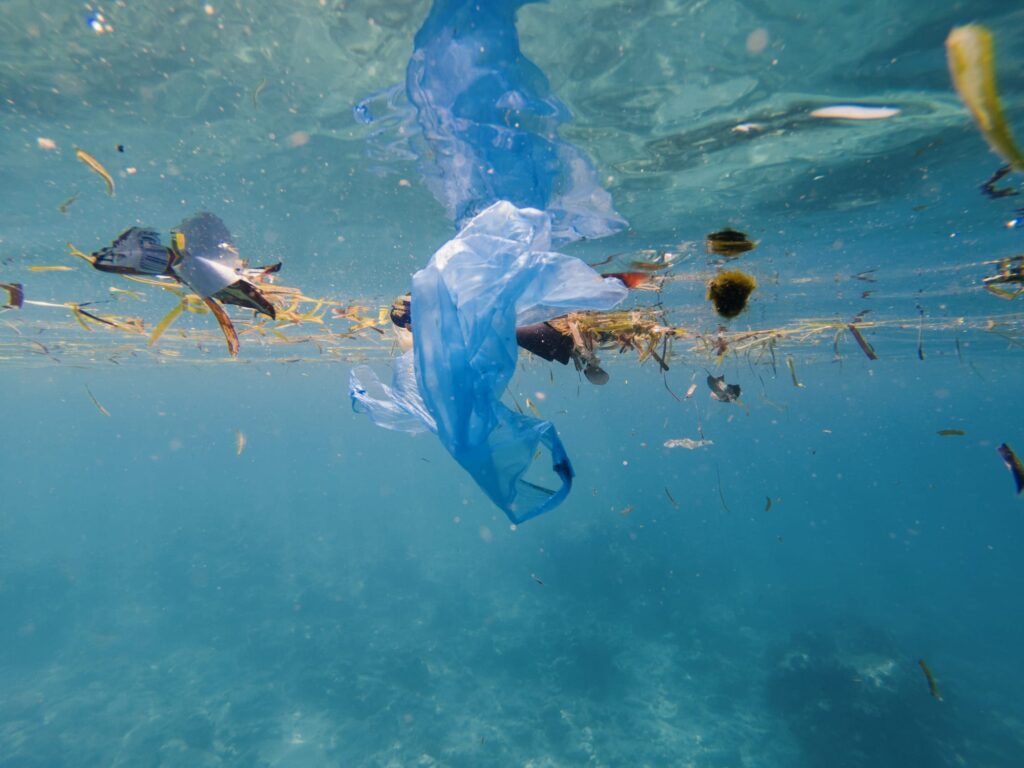In this blog, ASA writer-at-large Meghan Cleary answers a question from a reader. Meghan is on a 9-month cruise in the tropics aboard S/V Velella. Got a question you’d like Meghan to answer? Post a comment or email us.
Reader Louis asked for Meghan’s advice on open-ocean mooring and sailing at night. “Do you simply heave to, use a sea anchor, or are basic mooring lights sufficient?”

The winter solstice receives much-deserved celebration from cruising sailors. Finally, our chilly night watches start shrinking as the warm sunny hours push them out minute by minute over the coming weeks. The long-awaited sunrise will now begin to surprise us every morning by a minute or two. Even though we are now well used to sailing overnight (and sometimes even make a habit of it so as to have more daylight hours at our destination), the sight of the sun sinking below the horizon still quickens my pulse every time.
Before we had ever sailed Velella on an overnight passage, night watches were like a legend shrouded in mystery to me. We rarely had use for our navigation lights, because we made sure we were tucked in safely in a harbor before sunset. But in preparation for a trip such as this, where there are often stretches of coast too long to transit during just one day, we had to learn how to make way through the night.
Our first overnight passage was during our ASA 106 certification course in the Puget Sound, with an instructor from San Juan Sailing on board. I was happy to have Chris with us, as I knew that he would be dozing close at hand should we have questions or need help in the middle of the night. I envisioned my night watch in advance, preparing myself by understanding the tools I’d need to navigate with–a radar, chart plotter, the compass, and the knowledge of ship’s lights–rather than my eyes, which did most of the navigating in the daytime.
Perhaps it’s my imagination (and I don’t have meteorologic knowledge to support this), but when the big orange wavering sun sets below the cold ocean, I always notice the wind freshening a bit. We’ve learned now to reef the main before a windy sunset, to avoid scrambling around in the dark. If the reef slows us down a bit, it’s worth the peace of mind that we won’t have any occasion to go on deck at night. We clip our harnesses in to the cockpit so the other can sleep easily knowing their mate won’t fall overboard. We have a comfortable sea berth made up with clean sheets and a lee cloth, which makes for snug sleep in a seaway. We have an iPod and books on tape and snacks and hot drinks for the on-watch. We’ve learned how to make night watches safe, comfortable, and not scary in the least.

But there was a point in time when we didn’t know what it would be like at all, and the thought of sailing through the night was quite daunting. We learned that there’s no need to stop sailing at night–you just flip on your running lights (red/green at the bow, white at the stern), and keep moving right along, just as if it were daylight. If large seas or strong winds are making the motion uncomfortable, you can heave to, which effectively lets the boat drift in a surprisingly comfortable position so the crew can make a decent meal or get some rest. A sea anchor would be reserved for the most dire of storm situations; we have never had occasion to use one, and only rarely even heave to. The boat sails just as beautifully at night as during the day–you just need to keep a good lookout for ships (and study up so you know what their lights mean when you see them).
Sailing at night is a new dimension, to be sure. So doing your first watch with an ASA instructor, like we did, will give you much peace of mind, and teach you the ropes in the dark. Though it’s a challenge to swallow your fear and sail through the night for the first time, it’s a challenge well worth taking. Billions of stars in the dark night sky become a blanket over the cradle of your cockpit, and the glittering, phosphorescent wake your boat leaves will make you wonder whether it’s all a dream. And there is nothing, nothing, on earth as beautiful and welcome as the warm dawn rising after a thrilling night at sea.
Here’s where Meghan, Prescott and Nessie will be cruising under the stars tonight:
View Voyaging with Velella in a larger map








